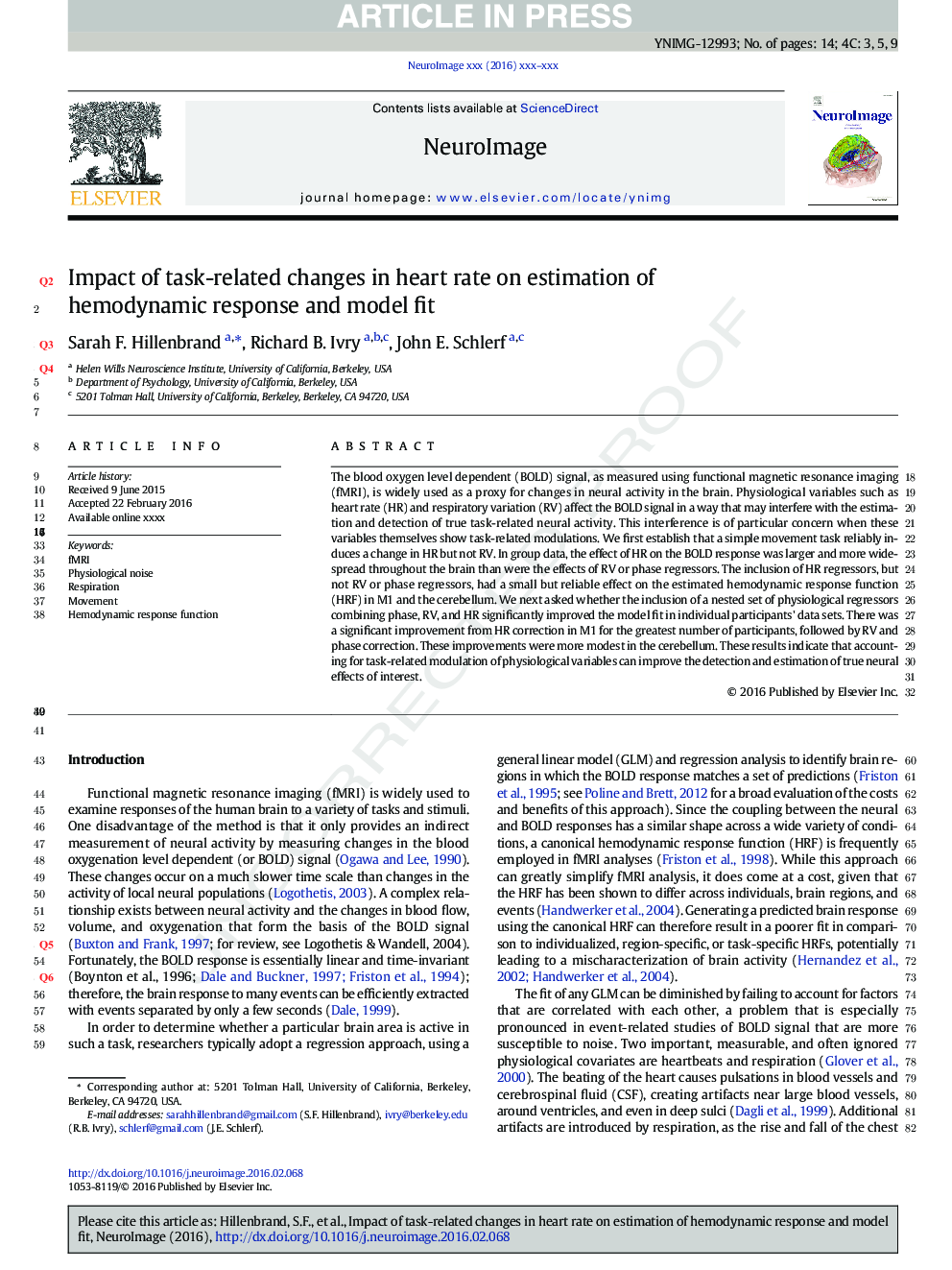| کد مقاله | کد نشریه | سال انتشار | مقاله انگلیسی | نسخه تمام متن |
|---|---|---|---|---|
| 6023757 | 1580876 | 2016 | 14 صفحه PDF | دانلود رایگان |
عنوان انگلیسی مقاله ISI
Impact of task-related changes in heart rate on estimation of hemodynamic response and model fit
ترجمه فارسی عنوان
تاثیر تغییرات مرتبط با وظیفه در ضربان قلب بر برآورد پاسخ همودینامیک و مناسب مدل
دانلود مقاله + سفارش ترجمه
دانلود مقاله ISI انگلیسی
رایگان برای ایرانیان
کلمات کلیدی
موضوعات مرتبط
علوم زیستی و بیوفناوری
علم عصب شناسی
علوم اعصاب شناختی
چکیده انگلیسی
The blood oxygen level dependent (BOLD) signal, as measured using functional magnetic resonance imaging (fMRI), is widely used as a proxy for changes in neural activity in the brain. Physiological variables such as heart rate (HR) and respiratory variation (RV) affect the BOLD signal in a way that may interfere with the estimation and detection of true task-related neural activity. This interference is of particular concern when these variables themselves show task-related modulations. We first establish that a simple movement task reliably induces a change in HR but not RV. In group data, the effect of HR on the BOLD response was larger and more widespread throughout the brain than were the effects of RV or phase regressors. The inclusion of HR regressors, but not RV or phase regressors, had a small but reliable effect on the estimated hemodynamic response function (HRF) in M1 and the cerebellum. We next asked whether the inclusion of a nested set of physiological regressors combining phase, RV, and HR significantly improved the model fit in individual participants' data sets. There was a significant improvement from HR correction in M1 for the greatest number of participants, followed by RV and phase correction. These improvements were more modest in the cerebellum. These results indicate that accounting for task-related modulation of physiological variables can improve the detection and estimation of true neural effects of interest.
ناشر
Database: Elsevier - ScienceDirect (ساینس دایرکت)
Journal: NeuroImage - Volume 132, 15 May 2016, Pages 455-468
Journal: NeuroImage - Volume 132, 15 May 2016, Pages 455-468
نویسندگان
Sarah F. Hillenbrand, Richard B. Ivry, John E. Schlerf,
